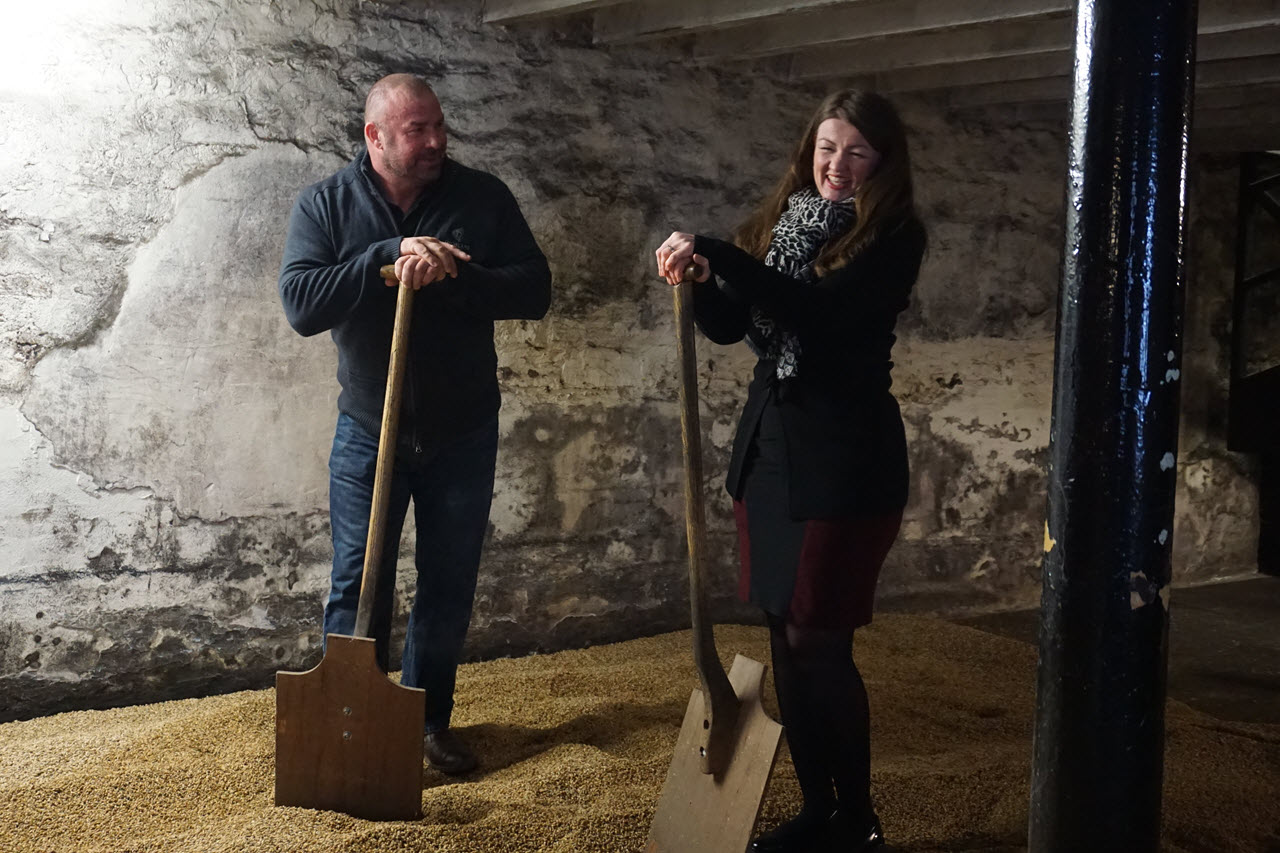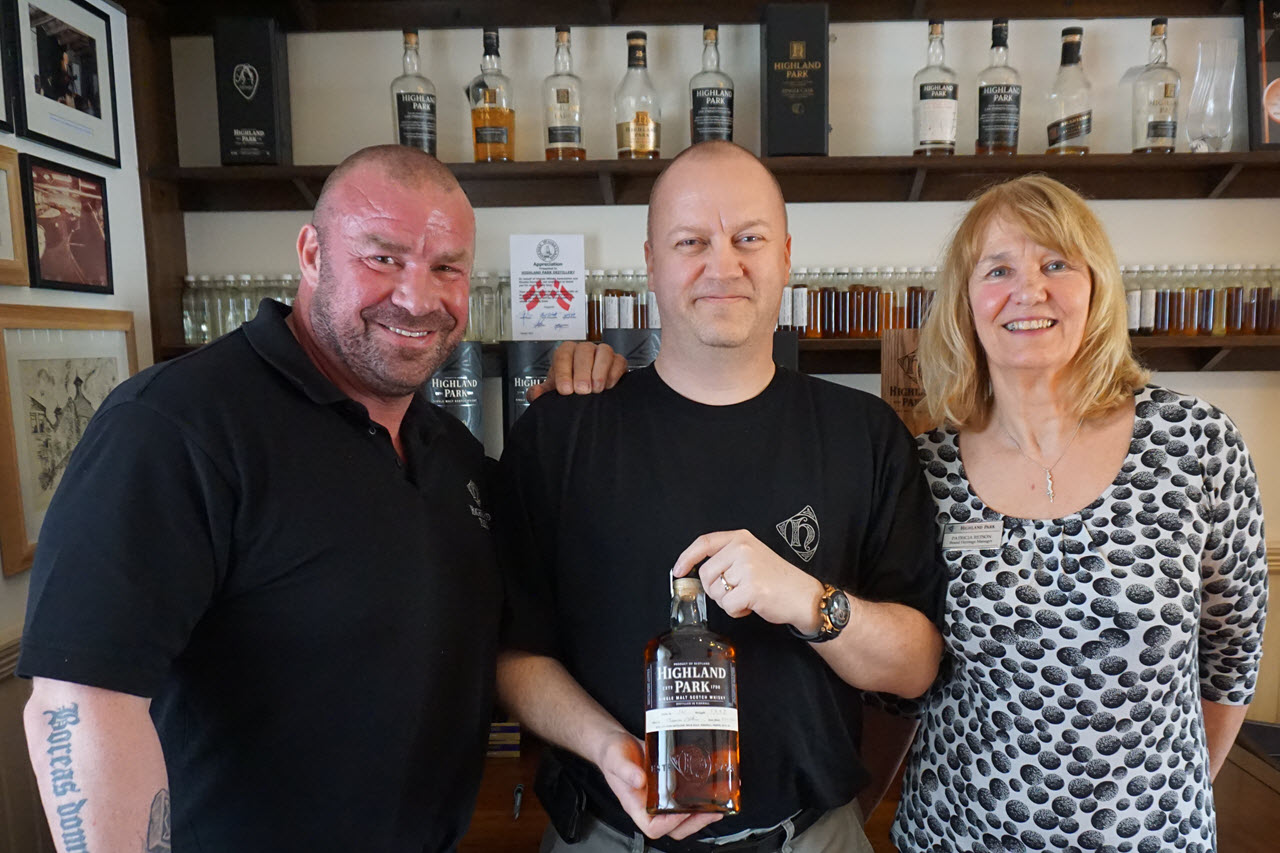Visiting Highland Park Distillery
A few days ago we finally got to visit Highland Park Distillery on Orkney. To be more specific, Highland Park is located in the town of Kirkwall on the island Mainland, which is part of the Orkney Islands - the northern most part of Scotland. Getting to Orkney is not very easy. You either fly or take a ferry. Travelling from Norway we selected to fly - quite the tour actually - Oslo to Copenhagen to Aberdeen to Kirkwall! Arriving at Kirkwall Airport we immediately saw that Highland Park is a big deal in town:
The distillery itself is located in Kirkwall, just a few minutes drive from the harbor, and what a beautiful distillery it is! I would rank this in the top three of beautiful distilleries I have visited so far, up there with Laphraoig and Strathisla. All very well maintained, clean and just vibrating with a rich whisky history. Love it!
On site they have a great distillery store, as well as a well-stocked tasting room.
The distillery area is huge, as it is with most old distilleries in Scotland. With 23 warehouses on site, and several other buildings for production and offices it is like a small village in itself. Highland Park Distillery have both dunnage and racked warehouses. Where the dunnage warehouses have a capacity of 1200-1500 casks, their racked warehouses hold 6500-8000 casks.
In total they have capacity to store 46 000 casks on site, and are currently at about 43 000 casks. A lot of casks are also stored in mainland Scotland, on several different sites, due to practical logistics reasons and of course to minimize risk. You do not want to risk having it all literally go up in flames in an accident!
Once at the distillery we got a fantastic VIP tour, where we got to see it all. It is very special when you are given such an opportunity, to not only see the standard process you can see at every distillery with a tour, but also the more unusual details. For instance, this was the first time we got to see the steeping tanks, where the barley is steeped in water for two days before it is laid out on one of the five malting floors at the distillery.
Concerto is currently the barley type used by Highland Park Distillery. They actually malt more than 30 % of the malt they use in production on their own malt floors. It is still very much a manual process, as you can see from the picture below.
We got to see the mashtun, the 12 washbacks and of course taste the wort. It was interesting to note that the distinct honey sweetness I love about Highland Park whisky is also present in the wort, along with mild floral notes.
One of the true highlights of any distillery tour is to see the still room. Highland Park have two wash stills and two spirit stills. Unpolished workhorses running at close to capacity. The annual production is now at 1.8 million lpa (liter pure alcohol).
The spirit is distilled to 69,8 %, with a very narrow cut of just 14 %. The sister brand of Highland Park, The Macallan (both owned by The Edrington Group) has a cut at around 16 %. From what I have heard the average is closer to 18 % in Scotland.
Due to warehouse capacity limitations Highland Park have actually filled their casks at natural strength (69,8 %) for the last 5-6 years, rather than at the de facto industry standard of 63,5 %.
After the tour we got to see the luxurious Eunson room, named after Magnus Eunson, the founder of the distillery back in 1798. Then we had a tasting we will long remember. Tasting Highland Park Thorfinn and cask samples from the early 1970s were the absolute highlights. Reviews will follow, rest assured!
In the tasting room we were also met with a huge, positive surprise. It is now possible to get your own hand-filled bottle of Highland Park! Straight from a barrel in the tasting room, it is about 12 years old and at 53,3 %. It is from the same vatting that made up the Highland Park Cask Strength for Sweden, but now matured for a further 2-3 years.
Orkney is a lot more than 'just' Highland Park, and we got to see some really memorable sites. The one that maybe made the greatest impression on us was to visit the cliffs at Yesnaby. What a unique piece of nature! Legend has it that the Norse god Thor created these cliffs with his hammer. I guess he had a bad day, but the result has a dramatic beauty. We could have stayed here for hours just taking in the view.
To celebrate the view we had a wee dram of Highland Park 1978 Vintage. A perfect combination, I would say.
We also got to visit the peat fields owned by Highland Park, the Hobbister Moor. A total of around 300 tons of peat is harvested by the distillery each spring/summer. They consume about 2 tons of peat per 7,5 tons of malt. Big numbers and a lot of hard work.
Our stay on Orkney was really memorable, and I believe we decided to go back even before we left. When that will be, only time will tell, but we surely have to go back experience this again.
Kirkwall was a very nice, little town. We found two great pubs, Helgi's and Skippers Bar (at The Kirkwall Hotel), and a couple of great whisky shops. The selection of restaurants is also very good, and we had several great dinners on the island. The standout restaurant for us was The Foveran, where we had one of the best meals ever!
They do make beer on Orkney as well, not just whisky, and we got to visit both Orkney Brewery and Swannay Brewery. More on this later, perhaps, along with a review of our visit to Scapa Distillery.
Massive thanks to our friend Martin Markvardsen for showing us around at the distillery and on the island.
Sláinte! - Thomas









